Reference check letter template
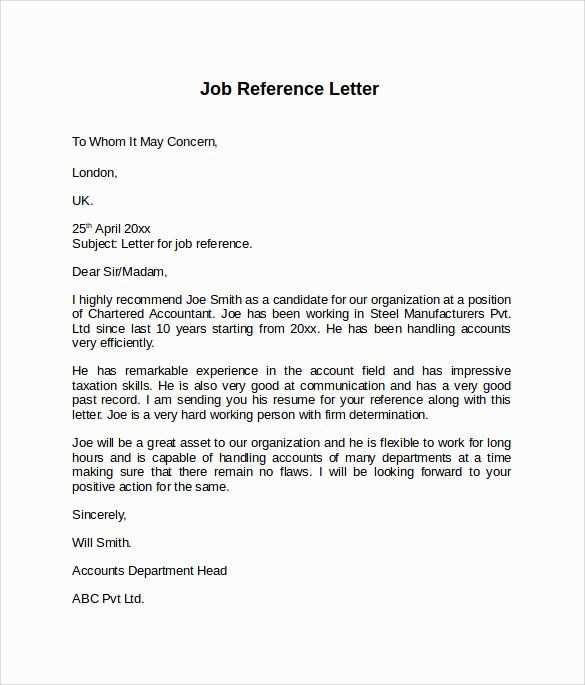
When requesting a reference for a job applicant, it’s important to craft a clear and concise letter. Start by introducing yourself, your role, and the purpose of the letter. This helps the recipient understand the context and set the tone for their response. Keep it formal but approachable, ensuring the reference giver feels comfortable providing relevant details.
Be specific about what you’re seeking from the reference. Mention the skills, qualifications, and experiences you’d like the person to address. If the position involves certain responsibilities, ask for insights on how the candidate has demonstrated those qualities in previous roles. This will guide the reference to provide targeted information that’s useful for evaluating the candidate.
Here’s a basic outline for your reference check letter:
Dear [Reference’s Name],
I hope this message finds you well. My name is [Your Name], and I am the [Your Job Title] at [Company]. We are currently considering [Candidate’s Name] for a position as [Job Title] and I would greatly appreciate your input regarding their qualifications and work ethic.
If possible, could you please provide your insight on [specific skills, accomplishments, or experiences]? Your feedback will assist us in making an informed decision. Please feel free to add any additional comments you believe are important.
Thank you for your time and assistance. I look forward to hearing from you soon.
Best regards,
[Your Name]
[Your Contact Information]
With a template like this, you can ensure you’re asking the right questions and gathering meaningful responses. Keep it straightforward, and make it easy for the reference to provide the necessary information. This can lead to a more thorough understanding of the candidate’s qualifications and work ethic.
Here’s the Revised Version:
To make the reference check letter clear and direct, use a concise approach. Focus on specific qualities or experiences that highlight the candidate’s abilities. Structure the letter by addressing key points and keeping it straightforward.
Key Details to Include:
- Introduction: Start by introducing yourself and your relationship with the candidate. Mention how long you’ve known them and in what capacity.
- Qualifications: Highlight the candidate’s relevant skills, achievements, and work ethic. Mention specific examples if possible.
- Suitability for the Role: Explain why the candidate would be a good fit for the position they are applying for. Link their strengths to the job requirements.
- Closing: Offer a clear statement of recommendation. Include contact information for follow-up if needed.
Example Template:
- Dear [Hiring Manager’s Name],
- Introduction: I am writing to recommend [Candidate’s Name], who I have had the pleasure of working with for [X] years as [their role].
- Qualifications: During this time, [Candidate’s Name] demonstrated strong [specific skills]. For example, [mention a project or achievement].
- Suitability for the Role: I believe [Candidate’s Name] would excel in the [Job Title] position, as their [specific skill] aligns well with the job’s demands.
- Closing: I highly recommend [Candidate’s Name] for this role. Please feel free to contact me at [Phone/Email] for any further details.
- Best regards, [Your Name]
- Reference Check Letter Template Guide
Begin by including a polite salutation, such as “Dear [Recipient’s Name],” at the top of the letter. In the first paragraph, introduce yourself briefly and mention the purpose of your letter: conducting a reference check for a specific candidate. Keep this part direct and to the point.
In the second paragraph, provide a clear request for information about the candidate’s skills, work ethic, and overall performance. Be specific with your questions to help the reference provide useful insights. For example: “Can you describe the candidate’s strengths and areas for improvement?” or “How did the candidate contribute to the success of the team?”
The third section should outline the timeline within which you would appreciate receiving the response. This gives the reference a clear deadline for submitting their feedback. “Please provide your response by [specific date].”
Conclude the letter with a polite closing. Express gratitude for the reference’s time and help, such as “Thank you for your time and assistance.” Make sure to include your contact information in case the reference needs to reach you for clarification or further details.
Finally, close with a respectful sign-off, like “Sincerely” or “Best regards,” followed by your name and job title, if applicable. Keep the tone formal, yet approachable, and ensure clarity throughout.
Begin with a clear and concise subject line that indicates the purpose of the letter. For instance, “Reference Check for [Candidate’s Name].” This immediately informs the reader of the letter’s intent.
1. Introduction
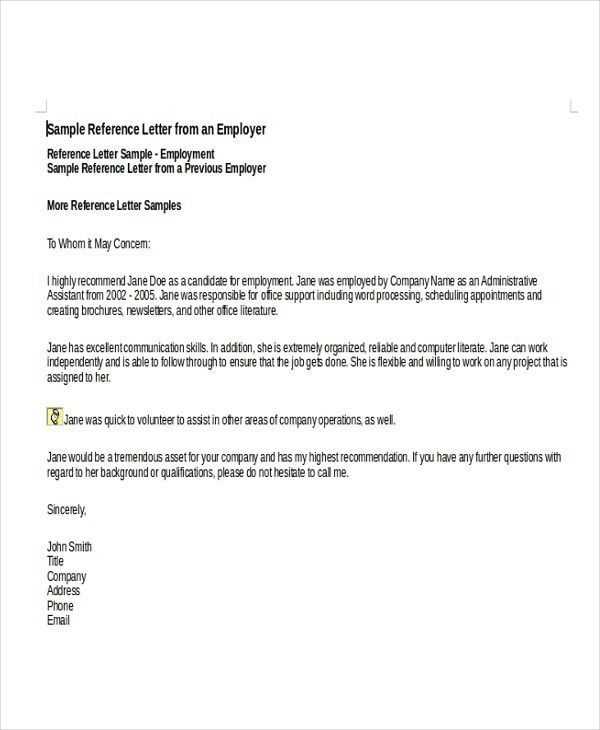
Start the letter by briefly introducing yourself and stating your relationship to the candidate. Include the reason for your request for a reference check. Mention the candidate’s role or the position they are being considered for.
2. Questions and Specific Areas to Address
Structure the body of the letter around specific questions or areas of evaluation. Ask about the candidate’s work ethic, skills, and accomplishments. Ensure the questions are relevant to the job they are applying for. You might inquire about their strengths, areas for growth, and how they interacted with colleagues and superiors.
3. Closing
Wrap up the letter by expressing appreciation for the recipient’s time and cooperation. Include your contact information for any follow-up questions or further clarifications. Be polite and professional in your tone.
To create a successful reference check letter, select a tone that aligns with the purpose and recipient. A formal and professional tone is often the safest approach, especially when communicating with potential employers or HR representatives. This helps ensure that your message is taken seriously and understood as a reliable source of information.
However, if you’re writing to someone you know well or have a closer relationship with, a slightly more conversational tone can be effective. Be careful not to sound too casual, as this might undermine the credibility of your letter. Strive for a balance that maintains professionalism while also reflecting a warm, personable approach.
Here’s a quick guide to choosing the right tone:
| Context | Recommended Tone |
|---|---|
| Employer reference for job application | Formal, clear, respectful |
| Reference for a colleague or friend | Professional yet friendly |
| Reference for a volunteer position | Supportive, encouraging, professional |
Adjust the tone based on your relationship with the recipient and the context of the letter. Keep it polite, concise, and relevant to the request at hand. Avoid excessive compliments or overly personal remarks, as these can appear insincere.
Ask about the applicant’s core strengths and skills. What specific abilities stand out in their work? This helps highlight the most valuable qualities the person brings to the table.
Include a question on the applicant’s work ethic and reliability. How does the person handle deadlines and manage tasks? This gives insight into their commitment and dependability.
Inquire about their ability to work with others. How do they interact with colleagues and clients? This can reveal their teamwork, communication, and interpersonal skills.
Ask for examples of how the applicant has handled challenges. Can they describe a time when they overcame a tough situation? This provides a practical example of their problem-solving skills.
Find out how the person manages stress or pressure. How do they perform under tight deadlines or high-pressure situations? This can highlight their resilience and adaptability.
Finally, ask whether the reference would recommend the applicant for a similar role. This direct feedback will often offer a clear indication of the applicant’s potential in the new position.
Ensure clarity and professionalism by avoiding these common mistakes when drafting check letters:
| Mistake | Why to Avoid | How to Fix |
|---|---|---|
| Being too vague | Unclear language can lead to confusion and misinterpretation of the reference. | Provide specific examples of the candidate’s qualities or performance. |
| Using overly formal or complex language | Excessive formality can make the letter feel impersonal and hard to read. | Use straightforward language that is easy to understand while maintaining professionalism. |
| Exaggerating the candidate’s abilities | Overstating someone’s skills may lead to mistrust if the candidate cannot live up to the claims. | Stick to honest, accurate assessments backed by clear examples. |
| Forgetting to mention relevant context | Missing out on context can make the letter feel disconnected from the role being applied for. | Align your comments with the job responsibilities and the candidate’s fit for the position. |
| Not proofreading | Typos or grammatical errors reduce the professionalism of the letter. | Review the letter carefully, or ask someone else to proofread it before sending. |
Avoiding these mistakes will help your check letter make a strong, honest impression, contributing to the candidate’s success.
Before requesting permission to use someone’s name or details for a reference letter, make sure to approach them respectfully and clearly. First, explain why you need the letter and how their input will be beneficial. Be specific about the nature of the reference, whether it’s for a job application, academic purpose, or professional recommendation. Offer them enough time to review the request, as they may need to check their availability or assess their comfort level in providing a reference.
Additionally, ask if they are open to being contacted by the requesting party, such as an employer or educational institution, and if they would like to set any boundaries on what information can be shared. Be prepared for them to decline, and respect their decision without pressuring them further.
After sending a reference letter, it’s important to check in politely to confirm that the recipient has received it and to inquire if any further information is needed. This ensures the process continues smoothly and shows that you are proactive.
1. Wait for the Appropriate Time
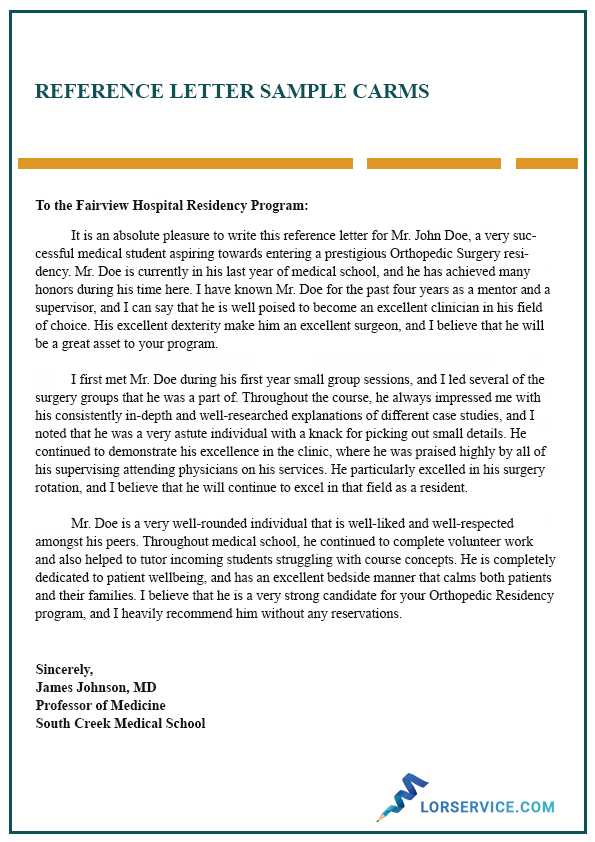
Give the recipient a reasonable amount of time to read and process the letter before following up. A week to 10 days is usually sufficient, depending on the urgency of the situation.
2. Send a Friendly Reminder
Reach out with a brief and polite email or message. Keep your tone warm and respectful, acknowledging that they may be busy. Offer to provide additional details or answer any questions they might have.
- Example: “I hope this message finds you well. I wanted to follow up on the reference letter I sent last week. Please let me know if you need any further information or clarification.”
- Keep the follow-up short and to the point to maintain professionalism.
3. Be Patient and Flexible
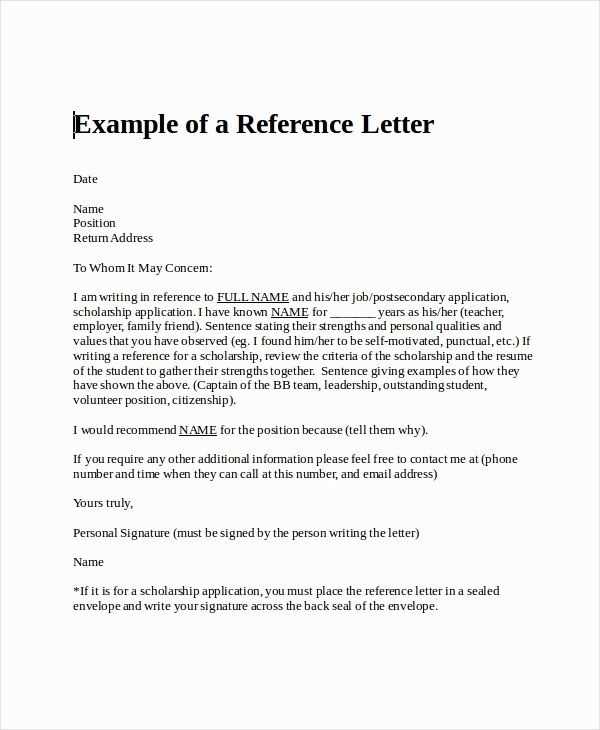
Understand that the recipient may need more time. If they don’t respond immediately, wait a few more days before sending a second follow-up. Being patient shows respect for their schedule and the process.
Reference Check Letter Template
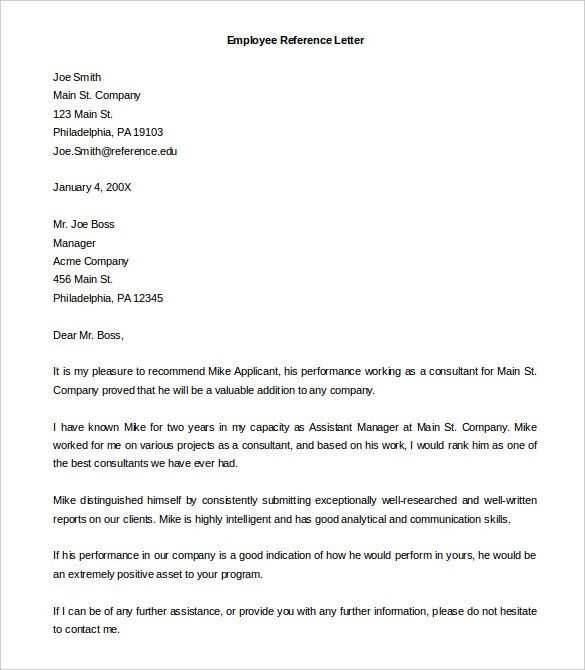
Begin by addressing the recipient clearly. Mention the purpose of the letter upfront, ensuring the tone is professional yet approachable. Highlight your relationship with the candidate, specifying the duration and nature of the professional interaction.
Key Details to Include:
- Name of the candidate
- Job title and dates of employment
- Specific responsibilities held
- Key skills demonstrated during employment
- Reason for leaving the company, if relevant
Structure of the Letter:
- Begin with a formal salutation and brief introduction.
- Provide context for the reference by explaining your role and your familiarity with the candidate.
- Discuss the candidate’s strengths, citing specific examples.
- Conclude by offering your recommendation, based on the candidate’s performance.
Ensure the letter is clear and concise, avoiding unnecessary information. Keep the tone positive, offering constructive feedback when necessary. Conclude with your contact details for further queries.